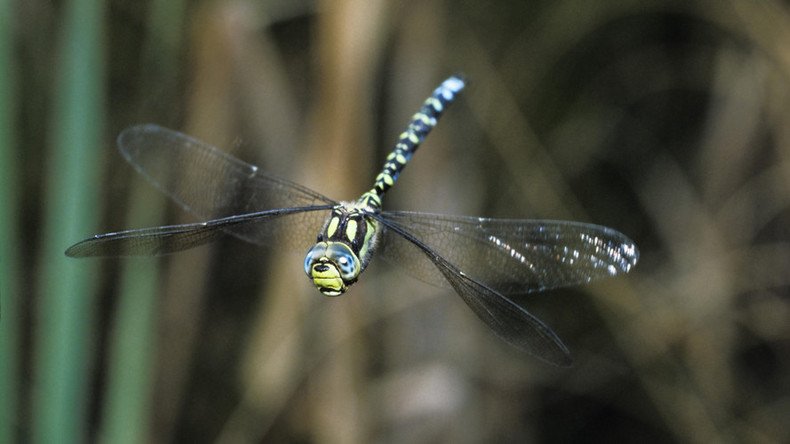Dragonflies carve up trapped bacteria with miniscule ‘nails’ in wings – study

Dragonfly wings are covered with tiny nail-like protrusions which lock bacteria on their surface before shredding the cells apart, new research has revealed.
It was “widely thought” that the bed-of-nails surface kills bacteria by simply – but effectively – puncturing the cell wall, according to the American Council of Science and Health (ACSH).
READ MORE: Scientists add letters to DNA alphabet to create ‘semisynthetic’ life
However, a team of researchers from Australia and Nigeria has published new findings in the American Chemical Society which describe how bacteria actually become stuck to the wing surface – and are torn apart if they attempt to move.
The nails, or ‘nanopillars’, stand at varying heights across the wing, according to the researchers. Bacteria get stuck on the ends of these nanopillars due to “strong adhesion” acting between molecules secreted by the bacteria and the surface of the wing.
The bacteria are trapped but can still survive if they don’t move, although any motion will prove fatal to the cells. The invaders are simply torn apart by “shear force when immobilised bacterium attempt to move,” the paper’s abstract notes.
READ MORE: ‘Useless’ appendix may play key role in immune system, say researchers
Once the bacteria have been damaged, the ‘nails’ can easily penetrate the membranes.
The researchers hope their findings could help the fight to develop bacteria-killing surfaces for human healthcare. “These findings could help guide the design of novel bio-mimetic nanomaterials by maximising the synergies between both biochemical and mechanical bactericidal effects,” they said.











